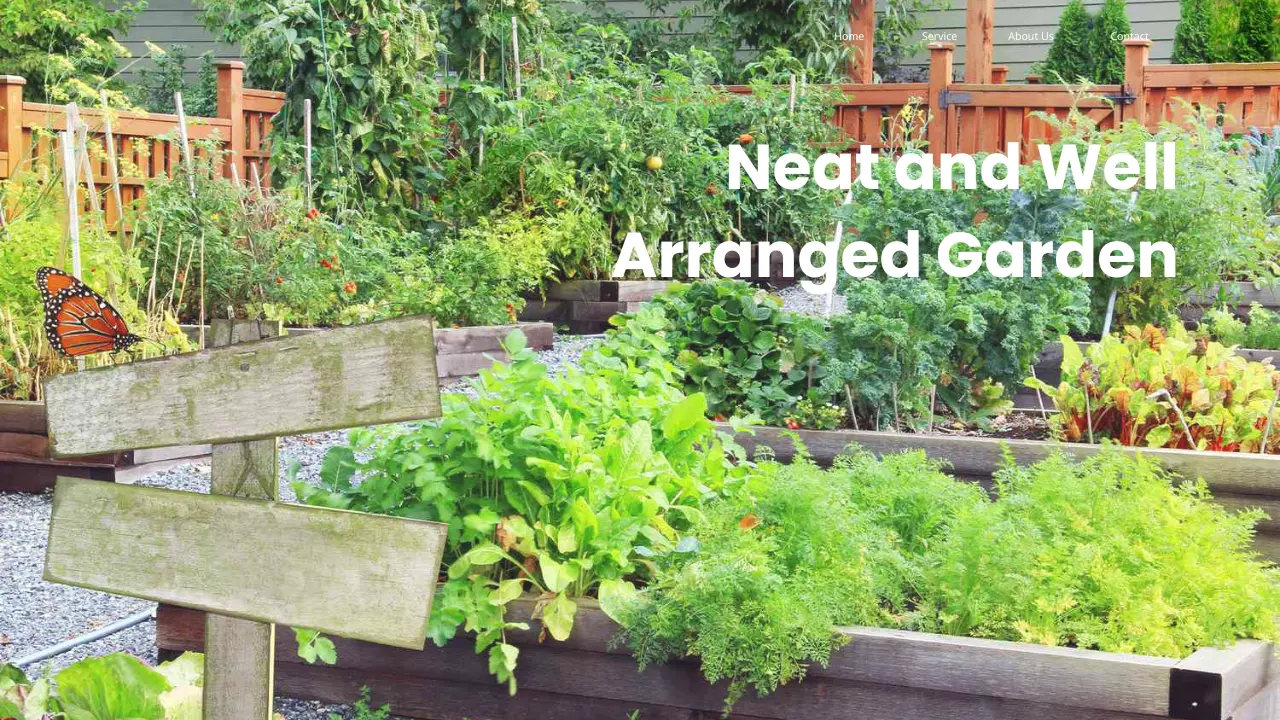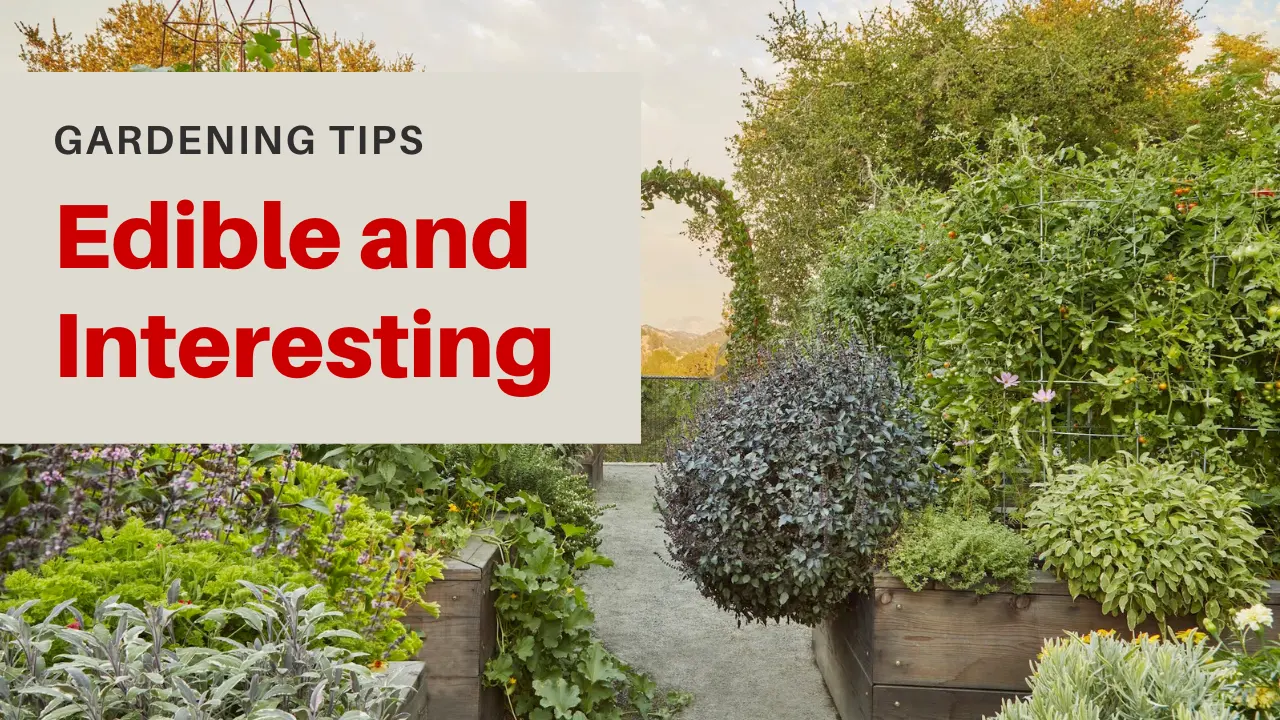Beautiful Kitchen Garden: Introduction
A beautiful kitchen garden or home or potager garden is the area of the land which is used specially to grow herbs, vegetables, fruits and at times, flower near the home which is used at home. They gardens are normally located close to the kitchen facility if the aim is to have the garden provide fresh food items. A beautiful kitchen garden’s primary role is to act as the source of fresh culinary ingredients that are readily available within the home.
Key characteristics of a beautiful kitchen garden include:
- Variety of Plants: It sometimes consists of vegetables, herbs, or at times even comes with fruits being grown into it. Tea garnishes may include tomatoes, lettuce, carrots, basil, mint and strawberries among others.
- Small Scale: A kitchen garden is generally smaller in size compared to a vegetable garden and can be established in areas like backyard, balcony or even the window sill.
- Aesthetic Appeal: In addition to being useful, a kitchen garden may be beautiful, containing many flowers and Shrubs; the layout may be artistic as well.
- Organic Practices: A large number of kitchen gardeners rely on the organic practices and do not spray synthetic chemicals like pesticides and fertilizers.
- Seasonality: Some of the plants that are grown in a beautiful kitchen garden are determined by the season and the climate such that the foods produced will be available all season.
In a broader perspective, the construction of a beautiful kitchen garden entails certain benefits as it entails the production of fresh healthy crops within the compound, cheaper food bills and body exercise from time to time.
Health Benefits of a Beautiful Kitchen Garden
A beautiful kitchen garden is a blessing in many ways needs as it is nutritional, psychological, and often recreational. Here are some key health benefits of maintaining a beautiful kitchen garden:
- Access to Fresh Produce: Organic farming allows for supply of own produce as fruits, vegetables and herbs – this is a delivery of fresh foods. Local, fresh fruits and vegetables are usually healthier compared to fruits and vegetables that have been bought in stores and may reduce their nutrient value when transported and when stored for some time.
- Healthy Eating Habits: It is very important to have fresh ingredients easily available so that one can easily practice healthy eating. Those who possess a kitchen garden will take more fruits and vegetables; these are vital in the diet of every individual to enhance his or her health.
- Physical Activity: Gardening is a form of exercise that involves movement of the body in such endeavor’s as digging, planting, weeding and watering among others. This can assist in enhancing overall health, building up of muscles and enhancing on the flexibility aspects.
- Mental Health Benefits: Being in a garden helps in lowering rates of stress, anxiety and depression. Any gardening activity can be considered as having a recreational purpose due to stress reducing capacities of nature and given satisfaction stemming out of nurturing green plants.
- Vitamin D Exposure: A person can be exposed to natural Vitamin D while working in a garden and Vitamin D is essential in the effectiveness of bones and immunity.
- Education and Skill Development: Gardening is a chance to get knowledge about plant biology, ecology, and the way to take care of plants sparing our planet. It can be a rather beneficial kind of education, at least for kids, as here they learn where the food comes from, and practice responsibility and patience.
- Improved Food Safety: When you farm your foods, you are assured of what you are putting onto your foods and that is why people are encouraged to become farmers. This way, you will be safe from unhealthy pesticides and chemicals that are usually used in the production process hence will be provided with organic foods.
- Enhanced Flavor and Variety: Vegetables and fruits from beautiful kitchen garden can sometimes have a better taste than the vegetables and fruits bought from stores, this is because the home grown vegetables and fruits may be harvested at the correct ripening stage. Also, you can cultivate classic and rare plant varieties, which may not be bought at shops or markets.
- Economic Benefits: Food production from home garden can cut the expenditure on food items. While one may experience initial costs of establishing the beautiful kitchen garden, in the near future it is cost effective.
- Community and Social Benefits: Gardening can also be done with other people, which means people can share ideas with neighbors or other people in the community. The exchange of fruits and tips on gardening makes people more connected and discuss social things.
The five components that, when considered together, define a beautiful kitchen garden are:
- Size
- Location
- Tending
- Purpose
- Beauty
13 Beautiful Kitchen Gardens
Seeking ideas for a beautiful kitchen garden as well as a productive one? Here are those beautiful edible gardens that will undoubtedly lure you.
A Neat and Well-Arranged Kitchen
Leading designer and a woman of substance with a green thumb Bunny Williams who has a beautiful kitchen garden in her Connecticut home implants harvesting in aesthetic delight.

Trellis Time
Straight lines of trellises and avoiding irregularities provide Atlanta, GA lifestyle author Danielle’s Rollins’ potager a well-defined and neat look. In the edible area alone, marigolds are used to repel pests whilst at the same time beautifying the place.
Elegant Herb Garden
An added bonus for such a definition is that an herb garden can be planned and designed to be immediately adjacent to this kitchen door. Some kitchen gardens try to express geometry of rows and straight lines, others locate the herbs and lettuces separately in groups.
Beautiful Edible Garden
Decking around this space was done so artistically, the boxwood has been kept as a boundary hedge and there are sparse edible plantings that turn lettuces, squash and other standard vegetable garden into what can best be described as a beautiful work of art.
Edible Design
Lettuces, beans and squash are prepared almost as geometrical RC structures, as small, separated islands in this successfully applied shot of style into an edible beautiful kitchen garden.
Vertical Edible Gardening
Currently, some of the trends that have continued to fascinated homeowner include the construction of Herb walls when gardening. Such grid systems are found in the market, ready made, for commercial use although usually they are of a smaller scale especially meant for the home who has little space. Check that the wall has a good exposure to the sun for the sunlight herbs require, preferably the southern or the western exposure.
Thomas Jefferson’s Garden
When it comes to applying such sources of inspiration to making edibles aesthetically beautiful, Thomas Jefferson’s Monticello vegetable garden is tough to beat.
Making Edible Elegant
Growing in perfectly intercalated levels and lined by a border of pea gravel gives this kitchen garden a systematic organization of the produce and the kitchen garden itself.
Edible and Interesting
Rosie Davidson of Atlanta has a herb and vegetable garden area; a red brick paved walkway passes through the cultivating area. Davidson cultivates tomatoes, cucumbers, eggplants, onions, squashes and herbs; basil and comfrey is one of the herbs that Davidson cultivates and it is widely available in England.

When Space Is Tight
Of course, an edible garden can be accomplished in a small apartment or a condo if one has to so desire. Even just place your edibles by the window in a flowering box and then you just stick in a variety of colors and foliage.
From Edible Products to Front Yard
If herbs and edible plants are planned to be the main focus of the front garden, one should encourage good design.
Intensive Gardening
This paper profiles the urban cottage of a famous personality, P. Allen Smith in Little Rock, Arkansas and highlight an area of the formal garden that practices intensive gardening with the methods like raised beds, container gardening and intercropping. Perhaps the smartest idea for the placement of the spring vegetable seeds can be directly sown, around tulips, as an example of both edible and ornamental gardening.
Cabbage and Flowers
Shape and texture strategies applied to an edible / ornamental garden need to be different and ensure interest. This deep red cabbage with large flat like leaves does well to accompany yellow flowers that are on tall slender stalks.
10 Rules to make a Beautiful Kitchen Garden
With the story of beautiful kitchen garden, here are ten rules that you need to follow for getting a beautiful kitchen garden:
That is; while farming fruits and vegetables is not as complicated as rocket science, it implies science in its basic sense. Here follows simple measures that can be taken on the process of growing food in the garden.
Find the Sun
Almost all the vegetables require six hours of direct sun exposure a day – and more if possible. Exceptions in this case include environment that can require less such as lettuce and radishes.

Start Small
If you are starting out with your first garden, assist yourself so that you can minimize on the overwhelming experience of weeding and general maintenance. Just a 10-foot square of bed is enough to possibly cultivate a significant amount of food.
Build Up Your Soil
Soil is one of the premises of having a healthy and productive garden and should have a good tilth which include being wide crumbly and have good retention of water. Use such amendments in plenty especially the finished compost and humus one can also use bagged amendments and straw.
Time Your Crops
Temperature of the soil is as important as the temperature of the air particularly when planting. Those that grow in spring like peas that can stand lite frost when they are growing may not grow when the soil temperature is below 39 degrees.
Always keep Cover in Mind
Watch out for a new frost in early morning, and prepare for it. A cloche acts in the similar manner like the cold frame as far as protection of plants from frost is concerned. It can be anything ranging from the classic glass bell jar, full cover with hoops to something as humble as the edge of a milk jug that has been halved. When frost gets anticipated, what one has to do is to place the cloche over the plant.
Mulch, Mulch, Mulch
The same way you’d just go ahead and mulch your ornamental beds, do the same thing with your veggie and fruit plantings. The layer of organic material besides improving on aesthetics provides some weed control and helps in conserving moisture.
Anticipate Animal Pests
This is not wanted especially when animal pests decide to make a meal out of your fruits as well as vegetables. Discuss with the neighbors and attempt to know what pests are expected in your area. When attractively fenced or screened as shown above these strawberries, raccoons, rabbits, ground hogs, deer, dogs and other unwanted denies can be kept away.
Mingle Your Plants
Too much of the same kind of plant in a grouping is perceived by bad bugs as ‘eat here’.
Stay on top of the harvest
Do your buying when fruits and vegetables are at their peak. Holding beans lets more energy on the plant to focus on the later fruit formation since beans are already harvested.
Don’t Hide Your Veggies
If possible, try to incorporate your fruit and veggie garden into and area of your yard that you are more likely to spend your time in. If the crops are nearby, it is easier to literally nip off a bad bug, or to water a plant that looks dehydrated.
For more information, visit our Home page


[…] Give a read to Elevate Your Home with a Beautiful Kitchen Garden in 2024 […]